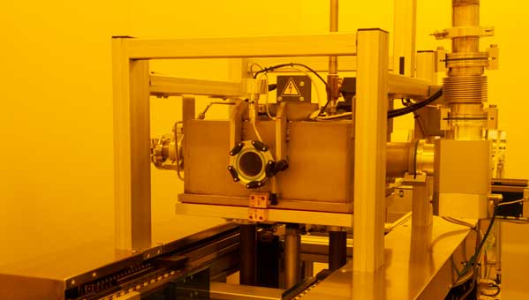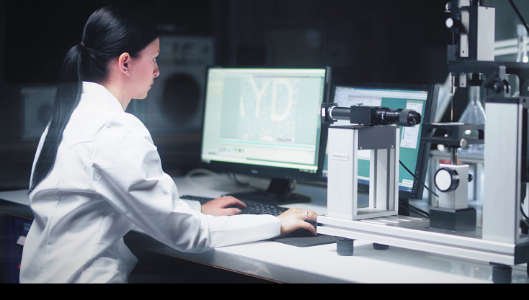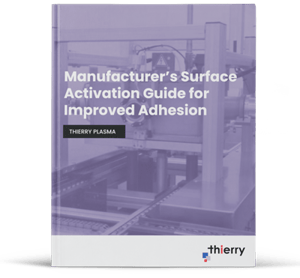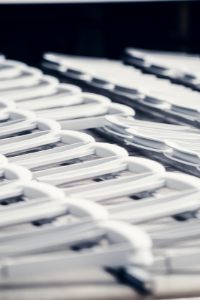
Surface adhesion is a fundamental factor affecting product quality for any product that is bonded, painted, sealed, printed or coated in any way. Reliable, high quality adhesion is the dynamic interface that ties together two or more different materials that help create a unique product of value. Poor adhesion results in high quality assurance (QA) rejection rates and a product that is often visually unappealing, inefficient, and faulty, requiring expensive production delays, costly reworks, and even recalls. If adhesion is low, product quality is low, and the resulting product value is correspondingly low. No company remains in business long selling low-quality products.
It is the tendency of dissimilar particles or surfaces to cling to one another on a molecular level. Adhesion is directly affected by surface energy, or the degree of attraction between a substrate to another material. Surface energy affects the ability of an adhesive to spread out over a substrate – low surface energy makes bonding difficult because there is poor surface contact. High surface energy means a material can flow more easily on a substrate for greater surface contact and a stronger bond.

There are many materials that can have low surface energy including plastics, rubber, metals, glass, and polydimethylsiloxane (PDMS). When the bond between the base material and the adjacent material is weak, failures in that bond can result in poor performance and product failure. Even when the chosen materials and bonding agents are well-suited for use together, the bond can often be improved with some surface modification.

When poor adhesion becomes a product quality problem it is critical to understand the underlying cause or causes behind the adhesion issue by conducting a root cause analysis of the materials and bonding agents. Surface energy analysis of the base material is essential for gaining insight into why your materials aren’t adhering well.
Dyne test inks and fluids (sometimes referred to as corona test fluids) are used for the quick and easy measurement of surface energy or wetting tension. When the dyne inks are applied to the material surface, the liquid will either form a continuous film on the surface or draw back into droplets. If the dyne test ink remains a film for three seconds or more then the material will have a minimum surface energy. If the dyne ink draws back into droplets in under a second, the surface energy, or dyne level, of the substrate is lower than that of the liquid value. The exact surface energy can be determined by applying a range of increasing or decreasing values of dyne test fluids.
This analysis uses a surface energy measurement system called a goniometer that measures the angle of contact between a liquid and the surface upon which it is applied. For example, a droplet of a coating is applied to the substrate to which it will be bonded and an image is captured of that contact, measuring the angle at which the droplet interacts with the base material to assign a surface energy level. The lower the angle, the higher the surface energy. When bonding two materials, the higher the surface energy, the higher bond strength that can be achieved.
In addition to the two test described above, several others can be performed to determine the bond strength, or adhesion, of the materials in question: a pull test, a detailed surface analysis using a scanning electron microscope (SEM), or a grid-cut test (also known as a cross-cut test). Some of these are performed prior to bonding to determine initial surface energy and some performed after bonding to analyze the quality of the bond or paint application. Of course, multiple tests would provide more data that could help corroborate initial test results as a more reliable basis for determining next steps.
It’s sometimes common for manufacturers to utilize substrate materials and bonding agents that may be compatible but are minimally acceptable compared to investing the time, effort, and money in determining optimal product materials. It’s a mistake to ramp up production and accept these minimally-acceptable solutions which may look more attractive financially but cost a lot more in the long run in terms of product failures, scrap and product recalls.
While initial consumer acceptance and sales may be good, sooner or later the market will respond to poor product quality and sales will drop off, returns will increase, and if poor product quality actually results in a potential consumer hazard, costly and damaging recalls will occur.

When a product suffers from poor adhesion and it becomes a highly-visible symbol of poor quality, it can hurt the overall profitability of the business. The result? Unanticipated investment in additional material research, increased testing costs, and higher production/quality assurance costs.
An additional impact of poor adhesion is lost revenues. Poor consumer reviews can spread like wildfire on social media, creating a significant impact on sales that can spill over to other product lines caught in the damaging limelight. Too many negative reviews can irreparably harm your brand reputation. Every company must be wary of launching or continuing to sell a poor-quality product, even if it’s just a small part of their overall business.
Fortunately, there are a few things that can be done to solve the issue of poor adhesion without having to turn to additional outside help. For example, the answer could be as simple as switching the substrate or the bonding agent, provided there are alternatives available that would yield similar results for all or most of the product’s key characteristics such as finish, color, durability, functionality, and consistency.
 If you’re limited to the original materials, some physical modification to the substrate might do the job, such as roughening the surface finish to create a non-uniform surface that would support a better bond. A rough texture increases surface area so the bonding agent or glue has more area to “stick” to. This can increase your overall adhesion to the surface but if the bond strength of the material to the glue or paint is poor, this will make little difference.
If you’re limited to the original materials, some physical modification to the substrate might do the job, such as roughening the surface finish to create a non-uniform surface that would support a better bond. A rough texture increases surface area so the bonding agent or glue has more area to “stick” to. This can increase your overall adhesion to the surface but if the bond strength of the material to the glue or paint is poor, this will make little difference.
Engaging more extensively with your vendors may yield some surprising results. If you have a good relationship with the appropriate vendor, they may be willing to invest some time and effort into researching ways to modify their product -- such as a coating, paint, or adhesive -- to react better with your preferred substrate. If they’re successful, the unique modification may cost you a little more and increase production costs, but if it yields a superior product that additional expense might be offset by an increase in price and/or sales.
If the vendor in question is your substrate supplier, they may be able to propose another material with similar characteristics, or be willing to make modifications to the original such as adding a siloxination agent to it to promote improved adhesion. However, while improving bonding capabilities, these agents typically have short shelf lives that can add even more cost to production.
Plasma technology is the choice of today’s manufacturers because it can significantly improve the surface energy, wettability, and adhesion of a variety of materials such as glass, metals, and plastics. Plasma surface activation is the process in which atoms from ions in a plasma are used to replace native atoms in surface polymer functional groups.
Plasma surface treatments are ideal for modifying non-reactive or non-wettable surfaces to obtain better bondability and adhesion properties. This enables the surface to form stable covalent bonds for more consistent and reliable coating with adhesives, paints, and inks.
In addition to increasing surface energy for improved bonding, plasma treatments can eliminate certain steps in a manufacturing process (and their associated costs), such as primer application, which also provides an environmental benefit by eliminating the generation of volatile organic compounds. These are a couple of reasons why plasma treatments are frequently used to activate plastics such as TPU, TPO, and glass-filled polypropylene.
Plasma treatments can help further reduce production costs by improving bondability enough to enable the use of less expensive glues that are now able to perform more effectively. This approach is not limited to production of plastics. Electronic manufacturers often use plasma to improve the performance of conformal coatings through plasma activation of the printed circuit boards (PCBs) before applying the coating.
Adhesion can be improved even when plasma is being used for ultra-fine surface cleaning – virtually any use of plasma activation increases surface energy and bondability. Plasma treatment also eliminates the need for the siloxination process mentioned earlier for improving low surface energy. This not only cuts costs and removes a toxic promoter, it also reduces overall production time (and therefore expense) because there’s no longer the need to wait for siloxination curing and evaporation.
Flame treatment is often used in manufacturing processes to modify a surface, particularly low energy ones such as plastics and composites, for better adhesion. The flame treatment process uses a blend of natural gas and air to create a hot, oxygen-rich plasma which removes surface contaminants and then activates the surface by partial oxidation. However, flame treatments can be inconsistent and over-treatments can produce spotty, weak bonds and damage to the surface material.
Corona treatment Energy from high-charged electrical corona breaks the molecular bonds on the surface of a non-polar substrate. The broken bonds recombine to form additional polar groups on the surface; these can provide increased surface energy and improved wettability.
Plasma treatment Similar to corona, but gases are injected into the corona discharge, helping lower the operating voltage and improve treatment of extra-difficult surfaces. Surface activation by plasma treatment is exceedingly fast, effective, economical, and environmentally friendly. An additional major benefit of plasma treatments is the ability to repeat a plasma treatment many times to further improve base material adhesion without damaging the material during treatment.
Plasma is the ideal surface modification solution because the breakdown of treated materials is minimal and the environmental impact of plasma is extremely low, since no chemicals are used in the process and no toxic fumes are formed. Wherever one layer has to adhere to another layer, plasma activation simplifies production procedures and improves the results.
The answer is simple. When adhesion challenges threaten product quality, plasma technology systems can significantly improve adhesion quality, consistency, and reliability without having to change your base materials or bonding/painting agents. Plasma systems can be added to your manufacturing process without creating a bottleneck, enabling you to improve product quality and consistency without affecting your production rate.
Low operational costs After an initial startup manufacturing cost, the operational and maintenance costs of our plasma systems are extremely low. You may even lower your overall production costs by eliminating additional production steps and materials such as primers or siloxination agents.
Environmentally-friendly Plasma treatments do not use or generate toxic materials or produce dangerous fumes and do not pose the environment risks that other processes such as chemical baths and flame treatments do, which can be hazardous not only to the environment but to workers as well. Utilizing environmentally-friendly technology and processes such as plasma treatments can even improve consumer acceptance and brand loyalty for a competitive marketing advantage.
Improved analytics Many manufacturing lines also require data analysis and backup records of all processes run. Plasma offers PC-controlled systems which log all data during each process and have the ability to easily export data for better process monitoring and management.

Thierry Plasma continues to lead in the plasma industry in North America because they constantly improve their technology and our products. Everything they do is data-driven. No guesswork. No head-scratching or fuzzy “what if?” thinking. As a customer-centric company, Thierry focuses solely on what’s best for the customer. What solutions do they need? What will work best to solve their problem, reduce their risk, and improve their product quality?
That’s why our systems are fully-customizable. To improve production and product quality, each tool is built to the customer’s specific needs, enabling their system to seamlessly fit into their manufacturing process. With over 8,000 plasma systems in the field and a proven track record of success, our extensive plasma technology experience is unmatched by the competition.
As a virtual extension of your product engineering team, we even maintain a surface applications laboratory in our facility to help companies like yours determine how well a plasma treatment can address their adhesion problem before they even decide to purchase a system. So bring us your toughest bonding and adhesion problems – we’ll show you the most cost-efficient and effective solution.
Learn about Thierry Plasma by downloading our eBook - Plasma Technology: Thierry's Surface Modification Solution for Manufacturers.
Plasma: +1 (248) 761 9253
Distribution: +1 (248) 549 8600
Fax: +1 (248) 549 3533
info@thierry-corp.com